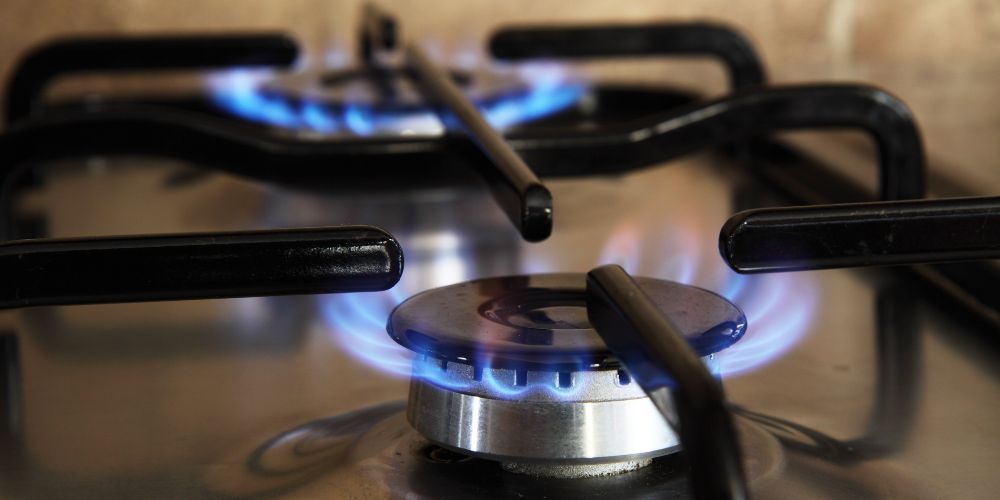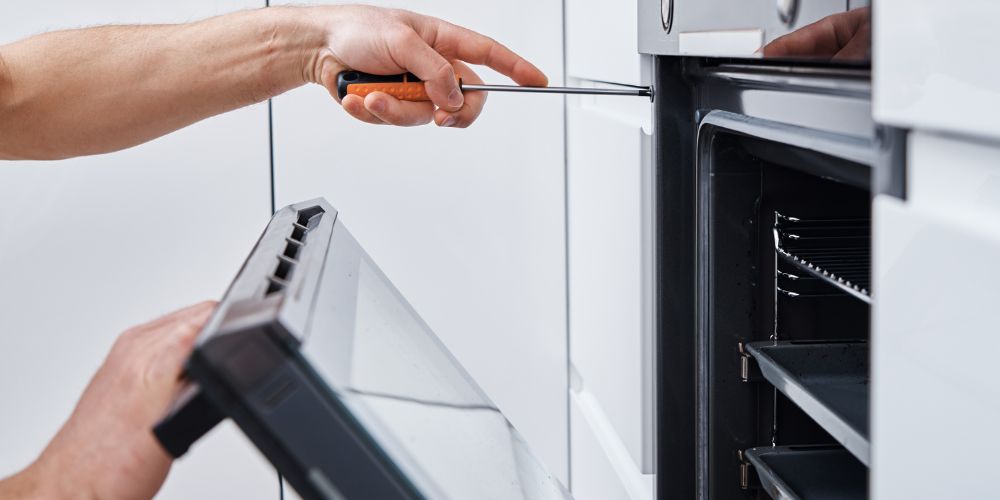A gas stove and oven are essential kitchen appliances that utilize natural gas or propane to generate heat for cooking. The stoves typically consist of burners atop a metal surface, allowing for precise control over flame intensity. It enables users to cook a variety of dishes efficiently. The oven, often situated beneath the stovetop, provides an enclosed space for baking, roasting, and broiling foods using gas-powered heat. Together, they offer versatility and reliability, making them popular choices in residential and commercial kitchens worldwide.
Our all-inclusive troubleshooting guide is your ultimate partner in mastering the art of gas stove and oven repair. From minor glitches to perplexing malfunctions, this blog will provide expert insights to help navigate any issue with ease.
Gas stoves and ovens are an essential part of any modern kitchen. However, like any other appliance, they can encounter problems from time to time. One common issue that many people face is ignition problems. If you find that your gas stove or oven is not igniting correctly, there are a few things that you can check before calling a professional.
First, make sure that the gas supply is on and the gas valve is fully open. Sometimes, a simple oversight can lead to a lack of ignition. Next, check the ignition switch or spark module. Over time, these components can wear out and may need to be replaced. If you notice any visible damage or if the switch feels loose, it’s a good idea to have it inspected by a professional.
Another possible cause of ignition problems is a dirty or clogged burner. Over time, food debris and grease can build up and block the flow of gas. To clean the burner, remove the grate and burner caps, and use a soft brush or cloth to remove any dirt or debris. If the problem persists, it may be necessary to have the burner professionally cleaned or replaced.

If you notice that the flame on your gas stove or oven is uneven or has a yellow color, it may indicate a problem with the burner or the gas supply. One common cause of an uneven flame is a clogged burner. As mentioned earlier, food debris and grease can accumulate over time and block the flow of gas. Cleaning the burner thoroughly can often resolve this issue.
Another possible cause of an uneven flame is a problem with the gas supply. If the gas pressure is too low, it can result in a weak or flickering flame. In this case, it’s best to contact your gas supplier to have the pressure checked and adjusted if necessary. It’s also important to ensure that the gas line is properly sized for your stove or oven. If the line is too small, it can restrict the flow of gas and lead to an uneven flame.
A yellow flame can indicate incomplete combustion, which can be a safety hazard. This may be caused by a dirty burner, a misaligned burner, or a problem with the air-to-gas ratio. In some cases, adjusting the air shutter on the burner can help resolve this issue. However, if the problem persists, it’s important to have your stove or oven inspected by a professional to ensure that there are no underlying issues that need to be addressed.
If you detect a gas smell in your kitchen, it’s important to take immediate action. A gas leak can be extremely dangerous and should not be ignored. If you notice a gas smell, follow these steps:
Ventilate the area by opening windows and doors to allow the gas to dissipate.
Avoid using any electrical appliances, as a spark could ignite the gas.
Locate the gas shut-off valve and turn it off. If you are unsure of the location, contact your gas company for assistance.
Vacate the premises and call your gas company or emergency services to report the gas leak.
It’s important to remember that gas leaks are not something you should attempt to fix on your own. Leave the repairs to trained professionals who have the knowledge and equipment to handle gas-related issues safely.
If you find that one or more burners on your gas stove are not heating properly, there are a few possible causes to consider. First, check if the burner caps and grates are appropriately aligned. If they are not positioned correctly, it can affect the flame and result in uneven heating. Adjusting the position of the burner caps and grates may solve the problem.
Another possible cause of a burner not heating properly is a clogged or dirty burner. As mentioned earlier, food debris and grease can accumulate over time and block the flow of gas. Cleaning the burner thoroughly can often resolve this issue. If cleaning the burner does not solve the problem, it may be necessary to have the burner professionally inspected and repaired.
In some cases, a faulty igniter can cause a burner to not heat properly. The igniter is responsible for creating a spark to ignite the gas. If the igniter is not functioning correctly, it may not generate enough heat to ignite the gas, resulting in a weak flame or no flame at all. If you suspect a faulty igniter, it’s best to have it inspected and replaced by a professional.

If you find that your gas oven is not maintaining the correct temperature, it can affect the quality of your cooking. There are a few possible causes for oven temperature inaccuracy. First, check the temperature sensor or thermostat. Over time, these components can wear out and may need to be replaced. If you notice any visible damage or if the temperature readings are inconsistent, it’s a good idea to have them inspected by a professional.
Another possible cause of oven temperature inaccuracy is a faulty control board or wiring. The control board regulates the oven’s temperature and controls the heating elements. If the control board or wiring is damaged or faulty, it can result in temperature fluctuations. A professional technician can thoroughly inspect and repair these electrical components to ensure that your oven operates smoothly and safely.
It’s also important to note that oven temperature inaccuracy can be caused by improper oven placement or ventilation. The oven should not be positioned too close to the wall or other appliances, as this can affect the airflow and temperature distribution. Additionally, ensure that the oven vents are clear and unobstructed to allow proper ventilation.
Gas stoves and ovens are reliable and efficient appliances that can enhance your cooking experience. However, when problems arise, it’s significant to address them promptly to ensure the safety and functionality of your appliance. By following the troubleshooting tips outlined in this guide, you can become a master at gas stove and oven repair. Remember, if you are unsure or uncomfortable with performing any repairs yourself, it’s always best to consult a professional technician who can ensure that your gas oven operates smoothly and safely.
For reliable repairs to electrical components in gas ovens, turn to Craig’s Gas & Plumbing. Our expert technicians thoroughly inspect and repair control boards and wiring, ensuring your oven operates smoothly and safely. Trust us for efficient solutions to keep your gas oven in top condition.